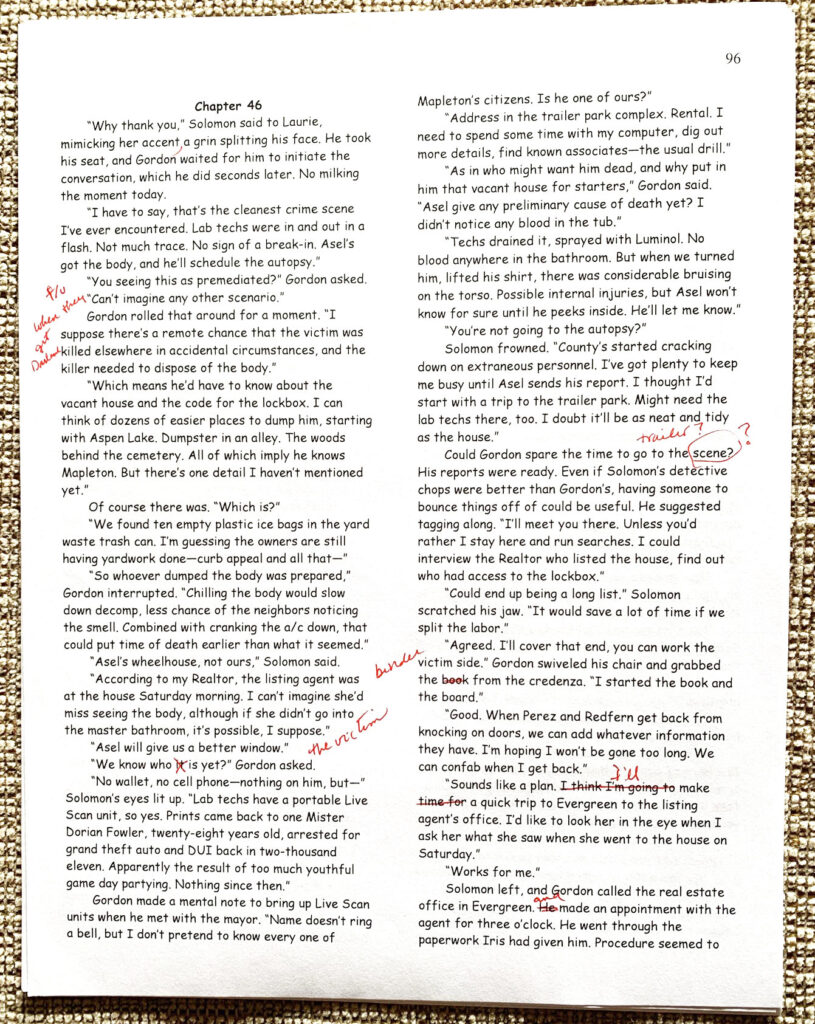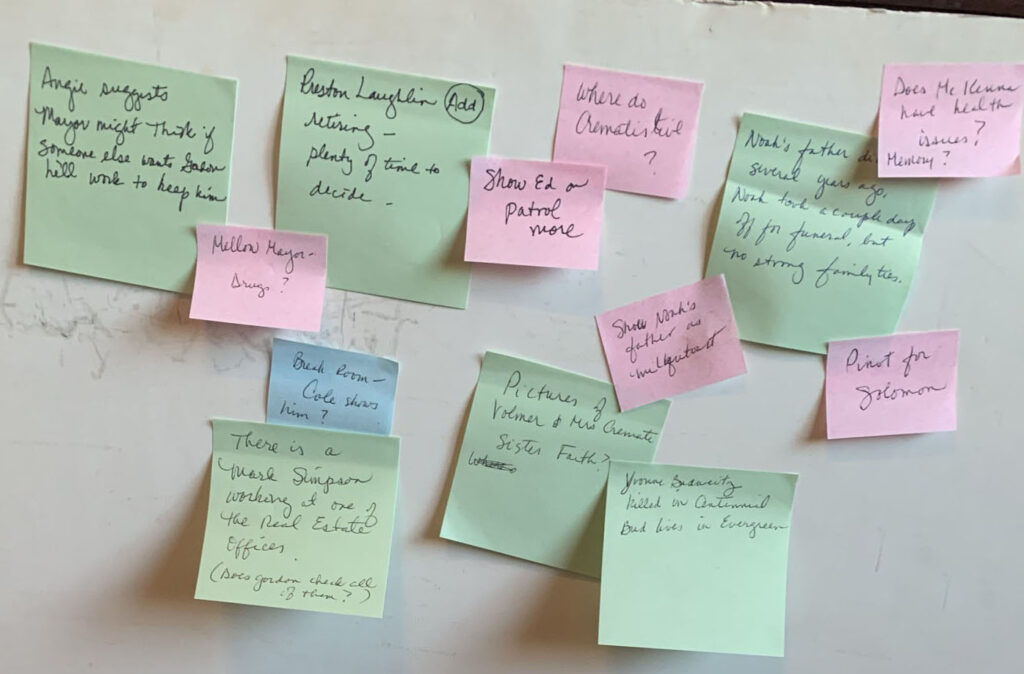Playing Tricks With Editing.
Terry Odell
 First–Happy New Year, everyone, and welcome back to TKZ.
First–Happy New Year, everyone, and welcome back to TKZ.
Over the break, I finished my personal edits on the manuscript of my next Mapleton Mystery, and I thought I’d share some of the tips I’ve discovered over the years for that final pass before turning the manuscript in.
We want to submit the cleanest possible manuscript to our editors, agents, or wherever you’re submitting. By the time most of us hit “The End”, we’ve been staring at the manuscript on a computer screen for months. We probably know passages by heart, we know what it’s supposed to say, and it’s very easy to miss things.
What we need to do if fool our brain into thinking it’s never seen these words before.
 Tip #1 – Print the manuscript. It’s amazing how much different it will look on paper.
Tip #1 – Print the manuscript. It’s amazing how much different it will look on paper.
Tip #2 – Use a different font. If you’ve been staring at TNR, choose a sans-serif font. In fact, this is a good time to use the much-maligned Comic Sans.
Tip #3 – Change the format. You want the lines to break in different places. I recommend printing it in 2 columns, or at least changing the margins. That will totally change the line scan, and it’s amazing how many repeated words show up when the words line up differently.
Tip #4 – Read away from your computer. Another room, or at least the other side of the room.
The above are all “Fool the Brain” tricks. Moving on to my basic process.
Tip #5 – Read from start to finish.
As I read, I have a notepad, highlighters, red pen, and a pad of sticky notes. This pass isn’t where I fix things; it’s where I make notes of things to fix. I don’t want to disrupt the flow of the read by stopping to check out if the character drove a red Toyota or a green Chevy. I have a foam core board by my chair, where I’ll post my sticky notes. Also, because it’s a hard copy, there’s not simple “Find” function.
When repeated words or phrases jump out, I note them on a sticky for a future search-and-destroy mission. I’ll circle or highlight words that could be stronger, or places where I might be able to come up with a metaphor that doesn’t sound writerly.
 I’m also critical of “does this move the story?” as I’m reading. The beautiful prose might not be all that beautiful when reading it in the context of the entire novel. Don’t be afraid to use that red pen. On the flip side, you can also note where a scene needs more depth, or something needs foreshadowing. Are characters behaving consistently? Or do their personalities change because the author needs them to do something for the plot.
I’m also critical of “does this move the story?” as I’m reading. The beautiful prose might not be all that beautiful when reading it in the context of the entire novel. Don’t be afraid to use that red pen. On the flip side, you can also note where a scene needs more depth, or something needs foreshadowing. Are characters behaving consistently? Or do their personalities change because the author needs them to do something for the plot.
Another thing I look for is named characters. Naming a character tells the reader “this is an important person.” Do they play enough of a role in the story to earn a name? Can they be deleted, or referred to generically?
Once I’ve reached the end, I’ll go back to the computer and deal with the notes I’ve made.
The last pre-submission editing chore for me—and it’s a tedious one—is to let the computer point out all the clunkers I’ve missed. Because, despite all the ‘trickery,’ the story is still familiar enough that I don’t catch everything.
For this, I use a program called “Smart Edit.” (I might do a full post on this software another time.) I use the version that’s a Word add-on, and run its checks. I know I have my standard crutch words, but it seems that every manuscript brings a few new ones that I lean on too heavily.
Once I’m finished with the Smart Edit purges, the manuscript goes off to my editor. My work up front means she should be able to spend more time looking at the story, and less time dealing with clunky prose.
The last step for me, which comes right before I’m ready to publish, is to let Word read the manuscript to me. I’ve talked about that before, and using ears instead of eyes is another way to trick the brain into thinking the story is new. And yes, I still find things to fix.
What about you? How do you deal with whipping your manuscript into shape before submitting it?
 My new Mystery Romance, Heather’s Chase, is available at most e-book channels and in print from Amazon.
My new Mystery Romance, Heather’s Chase, is available at most e-book channels and in print from Amazon.
Terry Odell is an award-winning author of Mystery and Romantic Suspense, although she prefers to think of them all as “Mysteries with Relationships.” Follow her on Facebook and Twitter.


